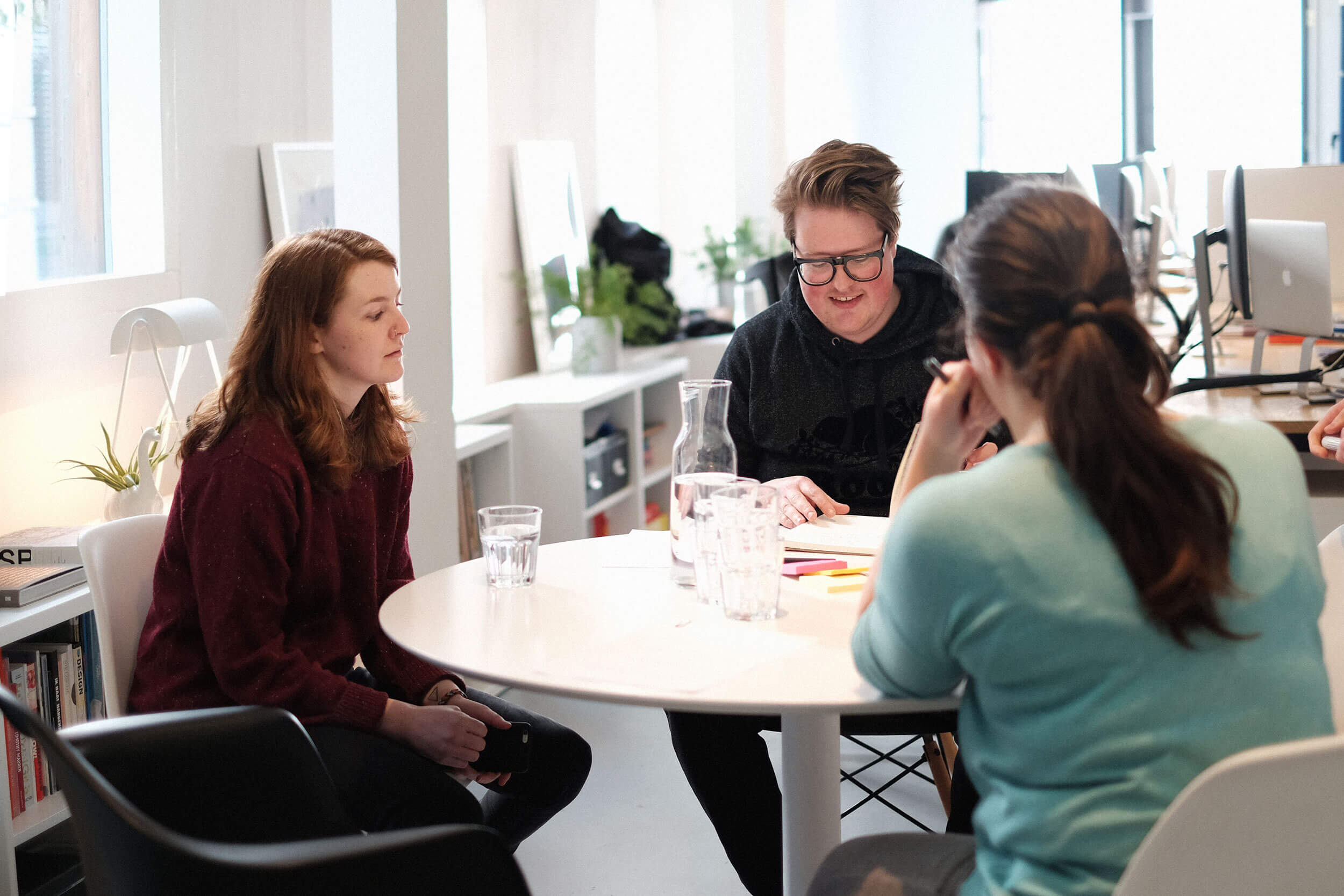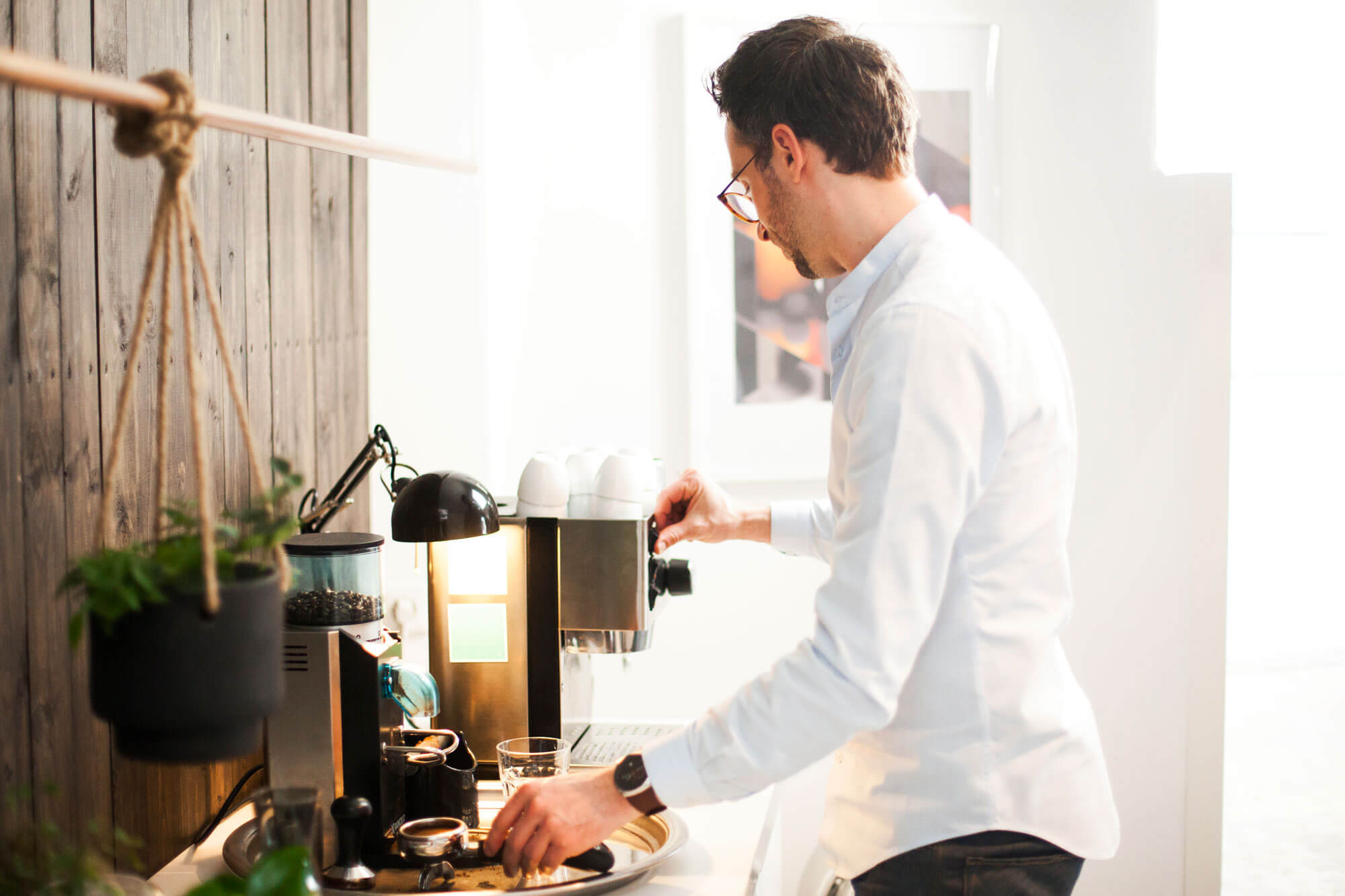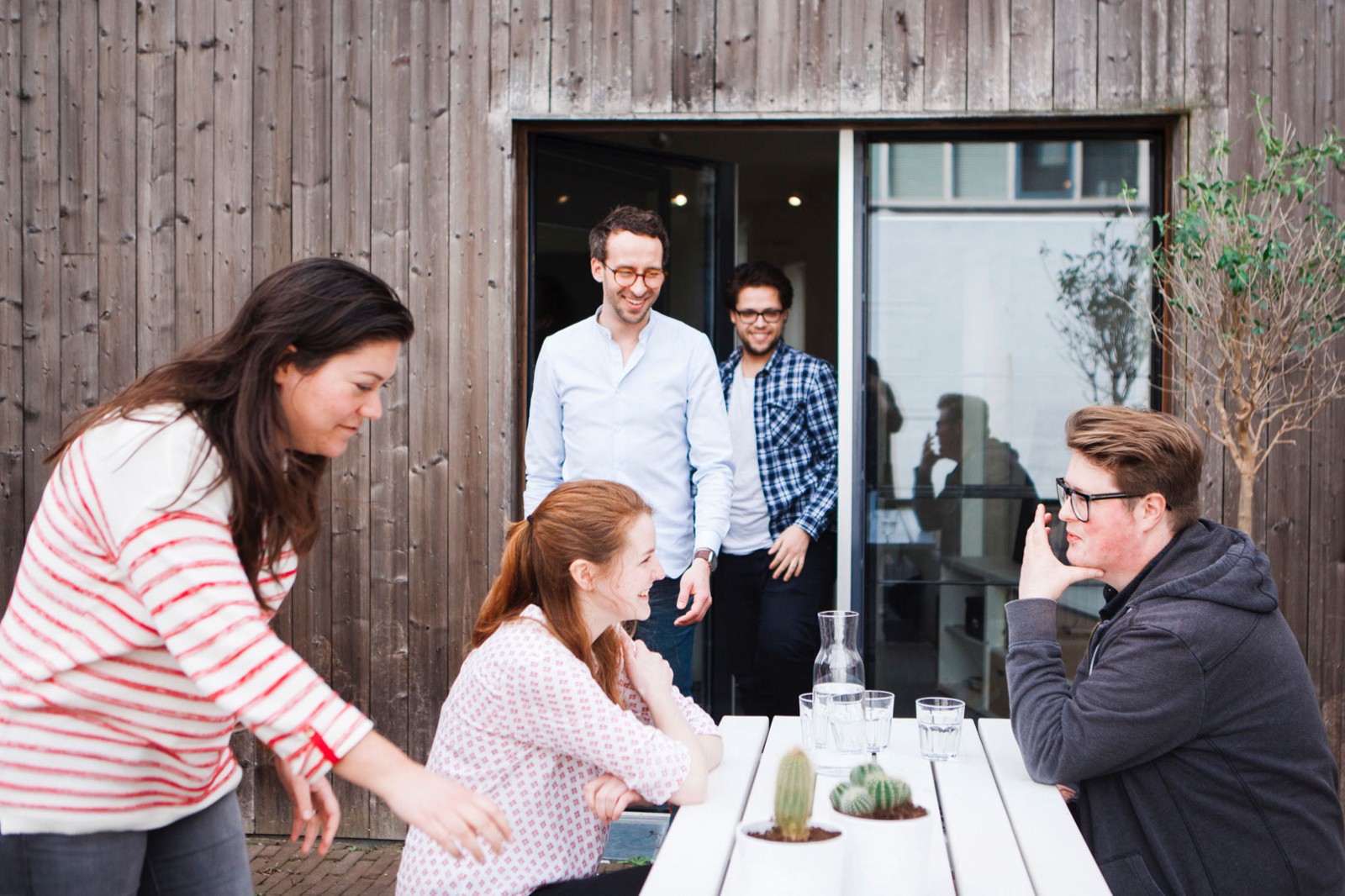
Dit artikel is enkel in het Engels beschikbaar.
You have contacted us because you might have a problem, or want to brainstorm on a potential future obstacle. Maybe you have a challenge, that’s great too. You’ve come to the right people, we are trained to design all kinds of purposeful solutions. Design in its essence is all about creating a process / plan that helps solve your problem.

These are some of the people you might meet.
One of the first things on the agenda (after we introduce ourselves) will be the brief. The brief is a set of constraints that gives us a framework from which to begin. This brief does not attempt to answer a question, nor does it contain a set of instructions. A well constructed brief will accommodate both freedom and constraint. Not too concrete, but enough to help establish a realistic set of goals. Not too broad, but still have enough room for interpretation and exploration.
Sidenote: If you have already written a brief or you are in the process of writing one, this article might help you redefine or narrow down a few things (article coming soon).
The reason that the brief is so important to us is because we design with intent. Which ultimately results in us having a much greater chance of solving the problem and adding real value. It increases the possibility of success, and that’s exactly what design should do.
In order to design with intent, we have to get to know you and find out if we ‘click’. This isn’t because we want to make as many friends as possible — although maybe we do! It all comes down to the better we get along, the better we’ll communicate, the more open and honest we will be. Which all steers us towards a better end result.
During the meeting we will dive deep into what you value most, the challenge, scope, constraints and why you’ve chosen us for the job. We won’t be able to tell you anything about the cost of the project just yet, not until we’ve unravelled it all. We first have to understand the project and everything that is connected to it.
First and foremost; we will ask you one really important question: What does a successful outcome for this project look like to you?
This answer will be used as a benchmark for our solutions and especially when we have to make difficult decisions. More importantly, it should clearly indicate the goal of the project. After we’ve defined ‘what success looks like’ we will start digging into your needs. In turn, these will help to better define howwe can reach the desired outcome, alongside a lot of other factors.

We love to take care of all our visitors with a good cup of coffee (or tea).
Besides looking at the ‘success factor’ it’s important to know why you are aiming to get there. Ask yourself and answer as honestly and accurately as you can: “What is my goal?”. When we’ve answered this, it’s time to examine your reason(s). This might be exploring a new market because you want to open a new office in the U.S., or because there’s a decline in sales that quickly needs figuring out. Once we find out why you are reaching out to us we can start to define the first constraints of the project.
Now is probably a good time to tell you that a website in itself, is not a goal — it’s a deliverable or tool. A deliverable without a goal is like a car without directions. And to stick with the metaphor; the road to success is often defined by several needs and constraints that have to be met, guided by a singular, clear and decision-proof intention. More on this later.
Understandably, without knowing anything about your business, we cannot be of any help. We need to be able to understand your decisions and the decisions of your clients.
When going through the process we will get to know who you are, what you do, how you do it and who you do it for. Why you do it is the most important of all. Often this is the core value to take into consideration when thinking of possible solutions.
If you have numbers concerning the topic, bring them. If you have insights that shine a light on the situation, bring those as well! Anything at all that can help us better understand the goal. Besides bringing hard, quantitative data, we truly believe in looking into the qualitative elements. For example studies that focus on observational patterns or insightful user-workarounds. Sometimes the solution is right in front of us. Or as Henry Ford put it: “If I had asked people what they wanted, they would have said faster horses.” In most cases asking what people want should be replaced with helping people to articulate latent needs they may not even know they have. Now that’s a challenge!
We will also ask you about your stakeholders (especially the invisible ones that show up at the end to veto everything — nobody likes to be excluded), designated contacts, what’s at stake, etc, etc. Overall I’d say, we are going to get pretty close.

In the summer we’ll even meet outside! That’s me on the right doing something weird to my chin :).
As designers we should be involved from the very beginning if you want the best results. For various reasons, one of them being that the clearest and best definition of design is that it’s ‘the creation of the plan to get to the solution’. It’s not just pretty colors and fonts sprinkled on top, although unfortunately we still hear stories about this.
Let me give you a real world example:
If we were to design a car interface together we would have to consider some important factors from the get-go. From visibility to button size, technical requirements, minimum distraction (watch the road people!) and sometimes we might even question the need for a traditional interface in the first place.
Before we can make any real decisions we would have to think about the goals of the interface — who will be using it, why are they using it and in what way do they benefit from using it. When the expectations match the experience then it’s design done right.
Not taking these things into consideration will set you up for, without a doubt, a disastrous result. As designers it’s our responsibility and job to investigate these kinds of things.
Now what if we say (for the fun of it) that we don’t take those things into consideration and we’d just make the interface look pretty. Than a nice analogy would be that we’d be ‘as useless as an architect trying to hide a shitty building under a pretty facade’. Eventually it will either collapse, or there simply won’t be an opening behind the main door… Resulting in something that just won’t make any sense. Your experience will not meet the user’s expactation. This could potentially have some serious backlash; everything from frustrated customers, bad reviews all the way to a massive increase in client-service phone calls. Nobody wants that.
This is why designers are brought in from the very beginning of a process.
Another important question to factor in is timing. Every design project has a clear beginning, middle and end. What it doesn’t have is a linear process. Those are two completely different things. When figuring out a realistic completion date we have to take a couple things into account. The first is your reason for picking up this new challenge at this time? Is there an event or are you preparing a new product launch? This helps to determine how urgent and fixed the deadline is.
If the problem is an existing one, and has been around for awhile, have you tried tackling it before? What happened the first time around and why didn’t it work? It’s always helpful to know if something has been researched before and what solutions were found. Especially the ones that didn’t work. This will give us insight into the complexity of the problem and this might affect the amount of time we need to come up with a considered solution.
Deadlines are important and in order for us to keep to them and deliver a good end result, they’ll need to be reasonable. If there is anything going on that might affect the deadline, please let us know in time so that we can take appropriate action.
We understand that everyone at your business is passionately involved. This may result in different views on the subject, which will in turn lead to different goals. If this is the case we will have to be really honest, because whatever we come up with (even after months of work) will never solve your problem. This is because you don’t share a common goal; you’re all at odds. Before we do anything else, you’ll all have to reach a common understanding.
Without solving the above you’ll likely be heading towards a trade-off of ideas. Nobody likes a trade-off. And in design it rarely leads to a good solution because it was never clear what it was built for in the first place. As designers it’s our job to point that out to you as soon as we notice it. It’s then up to you to get your thoughts in line. Sometimes it’s important to take one step back and start a ‘Design Thinking’ process (more on that here — coming soon). If things are not clear, this is a great system to get things out in the open and redefine your vision.
This being said, It’s more than welcome for members of your team to disagree. Heck, we even applaud it. Insightful opinions make for better solutions and different points of view. What’s important is that your intent should be the same, with everyone working in the same direction, agreeing on goals and having a business plan to stand behind.
A lot of designers feel uncomfortable talking about money — we don’t. Nevertheless, it can be a difficult topic but still an essential one. For you, the solution we create will likely have a greater return than it cost to set-up. For us, it keeps the lights on, the people happy and the mortgages paid. Win-win — exactly how it should be.
We prefer the use of value based pricing. It puts the emphasis on the fact that we are not an expense, we are an investment. It’s as simple as that.
The proposals we write ensure that you get the quality you deserve without having to worry about hourly rates and billing. With the questions we ask during this first meeting we will find out what the scope of the project is, where difficulties may arise and ultimately, where to add value.
The measure of success we’ve discussed earlier in the meeting is the baseline that helps us identify what the project requires before we can consider it a win. It’s this goal that simultaneously creates a welcome insight into the maximum amount you are willing to spend.
Some friendly advice in case you’re still shopping around. Designers that are able to give you a quote based on your first e-mail and short introduction to the project should raise big, red flags. Ask yourself this: Could you create a solution without asking about the problem? And without that knowledge, could you really give an honest quote that reflects the scope of the project?
For a quote to be considered a serious attempt at helping you further, the designer should dig deeper and ask real questions. We are here to help you by providing the best possible solution within your set of constraints, needs, possibilities and goals. It’s up to you if we’re worth the value we will eventually add.
A couple quick benefits:
During the meeting we will go over many different aspects. From all the aspects we’ve just discussed to asking if we are the only team on the job. From practical to emotional — we try to get as much understanding as possible. We will be insightful, observational and empathetic to understand where we can be of most value.
Design is flexible and a great tool to solve many different things. By learning from and with each other we can multiply our results and increase the potential of our solution. It all starts with good communication and participation. This was only the first small step.
Internally we will compare notes and write a detailed, honest quotation based on the conversation we had. It’ll involve many different things and will usually take us a couple days to create. In the meantime we will send funny gif’s and a thank you e-mail with a recap of our conversation.
Hopefully; until next time!
Sidenote: If you’re still doubting why or if you need design, we’ve written a piece about the value of design. It will give you a great insight into what our skills and workflow can do for you and when to bring us in. Read it here (coming soon).